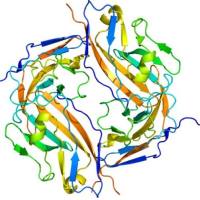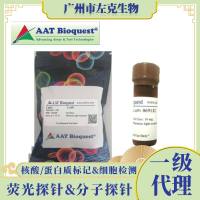2D-DIGE: Comparative Proteomics of Cellular Signalling Pathways
互联网
847
Two-dimensional (2-D) gel electrophoresis concerted with protein identification by mass spectrometry (MS) is an extremely powerful method for comparative expression profiling of complex protein samples such as cell lysates. The highly resolutive 2-D electrophoresis allows the separation of heterogeneous protein samples on the basis of isoelectric point (p I ), molecular mass (M r), solubility, and relative abundance ((1) J Biol Chem 250: 4007–4021, 1975; (2) Electrophoresis 14: 1067–1073, 1993). Consequently, it provides a comprehensive view of a proteome state ((3) Electrophoresis 21: 1037–1053, 2000), where variations in protein expression levels, isoforms, or post-translational modifications (e.g. phosphorylation) can be highlighted and investigated ((4) Electrophoresis 21: 2196–2208, 2000). Furthermore, this allows the identification of biological markers that characterize a specific physiological or pathological background of a cell or a tissue ((5) Proteomics 1: 397–408, 2001; (6) J Bacteriol 179: 7595–7599, 1997). In this way one can compare the effects of a stimulus or drug on cells or tissue, or more importantly, analyse the effects of disease on the expression level of proteins. Relatively recently, conventional 2-D gel electrophoresis has been combined with protein labelling strategies using up to three different fluorescent dyes to allow comparative analysis of different protein samples within a single 2-D gel platform. In this technique, termed differential in-gel electrophoresis (DIGE), samples are labelled separately then combined and run on the same 2D gel minimizing experimental variation and greatly facilitating spot matching. When three CyDyes (Cy2, Cy3, and Cy5) have been used, three images of the gel are captured then superposed to localize the differentially regulated spots on the 2-D gel using image analysis software. This is an extremely powerful tool in comparative proteomics as these dyes provide a linear response to protein concentration up to five orders of magnitude and great sensitivity with detection down to 125 pg of a single protein, which is less than needed for MS identification. In this chapter, we describe the basic methods for protein labelling, optimization of the isoelectrofocusing parameters for the first dimension (where proteins are separated according to their isoelectric point (p I )), sodium-dodecyl sulphate-polyacrylamide gel electrophoresis (SDS-PAGE) separation for the second dimension (based on molecular weight (MW)), and different post-staining protocols of the 2-D gel and protein preparation for mass spectrometry identification.









